Building a Collection #66
Symphony no. 1 in C minor, Op. 68
By Johannes Brahms
________________
Johannes Brahms’ third entry in the top 250 classical works of all-time is his monumental Symphony no. 1 in C minor, a work of immense grandeur, power, and conviction. It makes its appearance on the list at #66, and is a personal favorite of mine. The final movement is one of the most epic creations in musical history in my opinion, and is life affirming in the best possible way.
Johannes Brahms
Johannes Brahms (1833 – 1897) was a German composer of the Romantic era, and is generally regarded to be one of the greatest composers in history. Even though Brahms was from the Romantic era, he was very much connected to the Classical forms following after Haydn, Mozart, and especially Beethoven. In that sense, Brahms represented a “conservative” approach to musical tradition at a time when form and convention were changing due to Wagner, Bruckner, and others. Brahms wrote symphonies and other orchestral works, chamber music, concertos, keyboard works, vocal, and choral music.
Brahms was from a musical family in Hamburg, and showed a great deal of promise even at a young age. He began as a pianist, and would often perform around Hamburg in eating and drinking establishments. By adulthood, Brahms had become friends with well-known musicians of the time. He befriended the violinist Joseph Joachim, a relationship that would be personally and artistically important throughout his life. But perhaps most important was his friendship with the famous composer Robert Schumann. Schumann, twenty-two years older than Brahms, became his most fervent advocate. Brahms likewise had tremendous esteem for Schumann. Brahms practically became a member of Schumann’s family, and after Schumann’s death at the too young age of 46, Brahms continued to be close friends with his widow, the pianist and composer Clara Schumann. Brahms never married, although he apparently had several romantic relationships throughout his life. There is speculation about whether Brahms and Clara were more than friends, and there is evidence that Brahms was probably in love with her.
Many of Brahms’ compositions have become universally known, and many are perennial favorites that are frequently programmed by orchestras around the world. As part of the “Big 3” of Bach, Beethoven, and Brahms, he occupies a central place in the history of classical music. My personal favorites by Brahms include his Symphony no. 1 (see below), Symphony no. 4, Ein Deutsches Requiem, Piano Concerto no. 1, Violin Concerto, Haydn Variations, and his Piano Trio no. 1. It is his Symphony no. 1 we explore in this installment.
Symphony no. 1
It is fair to say that Brahms’ First had one of the longest gestation periods in classical music history, with the first sketches dating from 1855 and the premiere taking place more than 20 years later in 1876. Brahms had intended to write a symphony in D minor after hearing Beethoven’s Ninth Symphony in D minor in 1854, but those first sketches eventually ended up as parts of other works. Brahms was very self-critical, and one reason the symphony took so long to develop was Brahms himself constantly making changes and subsequently destroying drafts and beginning again. Brahms was seen to be Beethoven’s presumptive heir in the pantheon of German composers, and thus there was some pressure to produce works which would carry on the tradition and have their own gravitas. Following in Beethoven’s footsteps is no small task. Brahms once told a friend, “I shall never write a symphony. You have no idea how the likes of us feel when we hear the tramp of a giant like him behind us.” Still, Brahms received much encouragement from his good friend Robert Schumann and his wife Clara, which led him to keep the plan for the symphony in his mind.
The earliest version of the symphony dates from 1862, but it was a far cry from the eventual final product. The opening of the first movement originally did not have the dramatic thrust and urgency it would have later. The broad, insistent throbbing opening of the first movement was actually the last piece of the symphony Brahms composed. One general characteristic of Brahms as a composer is seen here as he presents a main theme and then continually develops and varies the theme to fit the mood. An important part of Brahms’ inclination to carry on with tradition is the repetition of the primary thematic material, and you can hear this in all his symphonies. Brahms does not repeat the exact material again, but rather varies it somewhat each time. So while Brahms took an essentially conservative approach, he did not strictly follow a classical structure and would often vary themes and put them in unexpected places.
The symphony is laid out in the traditional four movements as follows:
Un poco sostenuto - Allegro
Andante sonstenuto
Un poco allegretto e grazioso
Adagio — Più andante — Allegro non troppo, ma con brio — Più allegro
In the opening Un poco sostenuto — Allegro, timpani, strings, and woodwinds are used primarily in the first movement to create tension, as the strings rise and the woodwinds fall. There is an underlying anxiety and unsettled quality to the movement, and each time the main theme returns it builds more and more leading to larger climaxes. There are dynamic rises and falls in an atmosphere which might be described as despondent or angst-ridden.
The main themes in this movement revolve around the opening rising strings against the falling woodwinds, but later we hear a quick rhythmic pulse on the viola which turns into four notes which are in the same cadence as the beginning of Beethoven’s Fifth: SHORT-SHORT-SHORT-LONG. This leads back into the recapitulation and even more struggle. Finally near the end it feels we reach the peak of tension and then things relax until the end of the movement.
Program annotator Marc Mandel describes the second and third movements:
“The second and third movements provide space for lyricism, for a release from the tension of the first. The calmly expansive oboe theme of the E major Andante is threatened by the G-sharp minor of the movement’s middle section (whose sixteenth-note figurations anticipate the main idea of the third movement), but tranquility prevails when the tune returns in combined oboe, horn, and solo violin. The A-flat Allegretto is typical of Brahms in a grazioso mood—compare the Second Symphony’s third movement, or the finale of the Piano Concerto No. 2—and continues the respite from the main battle. And just as the middle movements of the symphony are at an emotional remove from the outer ones, so too are they musically distant, having passed from the opening C minor to third-related keys: E major for the second movement and A-flat major for the third.”
David McConnell from The Classic Review describes the epic final movement:
“Once again, the slow introduction contains the key ingredients for what we will hear over the course of the movement. Take note of the opening descending four-note figure in the lower strings, as well as the first violin phrase. At first solemn and mysterious, the music gradually builds in intensity and complexity, leading to an angst-ridden climax at 2’36.” The horns then play the Alpine melody Brahms had copied down and sent to Clara Schumann in 1868, writing under the notes “High on the hill, deep in the dale, I send you a thousand greetings!” Fragments of the horn call are played by various instruments until 3’59,” where trombones and bassoons play what sounds like a Lutheran chorale. The Alpine melody returns, leading us right into the Allegro proper.
This is the theme (5’03”) that many were quick to point out sounded very much like the Ode to Joy theme in Beethoven’s Ninth. (Brahms was quick to respond – “Any ass can see that.”) The theme, first played by the strings, is then repeated by the woodwinds and then full orchestra (Beethoven presents his “Joy” theme similarly in the ninth symphony). Brahms quickly leaves the nobility of this music behind, the theme fragments against scurrying scales in the strings and woodwinds. The chromatic and animated second theme is heard in the first violins (6’42”), accompanied by the four-note descending bass line we heard in the slow introduction. At 7’45” a triplet figure appears that quickly pervades every orchestral line, leading back to a reprise of the first theme (8’43”).
The Recapitulation should be a literal restatement of the material we heard at the beginning of the Allegro, but here it is not. The woodwinds accompany the melody with staccato interjections, and when the winds try to take the theme over from the strings, the melody is fragmented as the harmonies become more chromatic. In fact, from this point on the music is in a constant state of development until the Coda – Brahms is combining the Development and Recapitulation into one section.
As rhythms become increasingly syncopated and busy, the bustling energy drives the music towards its most overwhelming climax (11’42”). The Alpine horn returns to establish a sense of calm (and note the return of the timpani tattoo heard in the first movement’s introduction) The music then further develops the second theme (12’40”) and the triplet figure (13’48”), which propels the music to the Coda. The Lutheran Chorale theme returns (15’32”), victoriously sounded by the full orchestra, leading into the final minute, a true tour de force for the orchestra and an exultant celebration of C major.”
While I understand the comparisons to Beethoven’s Ode to Joy, Brahms stands firmly on his own with this final movement, surely one of his greatest creations. The alpine horn referenced above is one of my favorite parts of the symphony, followed by the sublime melody beginning with the strings which carries through the rest of the movement in various forms and repeats. Even though the symphony is in C minor, it moves to C major in the finale, ending on a high note. It is a fitting conclusion for a symphony which begins as a struggle followed by the two middle pastoral movements of respite, then the finale which begins in chaos but transitions to one of the most memorable and moving melodies in all of music, followed by a thrilling finish which brings down the house. Symphony no. 1 is where the genius of Brahms first appears for me at least, and the final movement never fails to bring me goosebumps. It is also why, despite the well-deserved acclaim of Brahms’ Fourth Symphony, it is his First which remains my personal favorite.
Recommended recordings
This is the part where I have to admit to my biases when it comes to Brahms. In general, I don’t believe Brahms’ music responds well to the period instrument/historically informed treatment. I have yet to hear a scaled down, HIP performance which completely convinces me, but it could still happen. For the most part, I like my Brahms big, bold, and larger than life. When it comes to Symphony no. 1, if the opening movement doesn’t strike fear in my heart, and the finale doesn’t lift me to the top of the mountain, then the recording is likely not going to be recommended. I realize readers and listeners will have different priorities and perspectives, and that is just fine. Some may prefer a more subdued approach, and to each their own. That just doesn’t do it for me.
The other thing I will mention is tempo in the First Symphony. If tempos are slowed down too much where the music drags and loses momentum, or in cases where the conductor slows things down to make it sound more profound AND if that persists throughout the performance, it probably won’t make the list (Furtwängler gets a pass because he knew when to slow down and when to speed up and was a genius at interpreting the German masters). Conductors that were more interventionist in their interpretations (in other words, did not always go strictly by indications in the score) are represented, as are others who followed the composer’s directions precisely.
There are endless recordings of the Brahms symphonies. It is nearly impossible to do an exhaustive survey of the available recordings (although I will try!). Factors such as style or interpretive approach, tempos, textures, and sound engineering all factor into the discussion and as I have often noted it is a highly subjective exercise. I may miss some good recordings, and if so I will rely on you to let me know as always.
There was a time I didn’t understand Brahms’ music, and I found it less accessible than other composers. That has completely changed in the past decade or so, and some years ago I went on a Brahms binge. Brahms considered himself a humanist, and therefore he was not a particularly religious man. Even so, I find so much spiritual meaning in his art. Listening to the final movement of Symphony no. 1 is a quasi-spiritual experience for me, as is his Ein Deutsches Requiem.
Legendary maestro Arturo Toscanini was known for his strict adherence to the score, as well as his disciplined approach to dynamics and rhythms. The first historical recording I recommend is Toscanini’s first account with the NBC Symphony Orchestra from 1941 on RCA. It must be said that while some critics pushed back against Toscanini’s quick, lean and sharply accented Brahms, Toscanini had direct ties with those that knew Brahms and knew how he wanted his music performed. He was closer in time to that tradition. The sound from Carnegie Hall 1941 is thin, boxy, and lacks depth. But it is quite listenable. I like Brahms played in this “take-no-prisoners” style, even if I believe the opening timpani and chords are too strident. As a whole the performance works and is exciting. If you like Toscanini’s Brahms but find this recording too severe, I also recommend his famous 1951 live recording with the Philharmonia Orchestra in London (I have the set on the Testament label, but Warner has also issued the set in recent years on streaming services since they owned the original tapes…the sound is roughly the same on both). This latter recording proves that Toscanini could moderate his approach to become less literal, somewhat more flexible and somewhat more lyrical. The London performance is perhaps the best we have from Toscanini, although the sound is still not very good and the over-reverberant Royal Festival Hall acoustic doesn’t help. Toscanini’s second RCA recording from ten years later in 1951, also on RCA and also from Carnegie Hall, has marginally better sound than the previous recordings, but doesn’t have quite the same impact as the other two performances above.
German conductor Wilhelm Furtwängler was perhaps the best interpreter of Beethoven, Bruckner, and Brahms we have ever seen, though regrettably he was averse to making studio recordings and his live recordings are in generally poor sound. If Toscanini was a rationalist and literalist, Furtwängler was an idealist and visionary. Both approaches are valid, but of course I will leave it to you which you prefer. My favorite recordings of Brahms’ First with Furtwängler are both from 1952: the first a live account from the Musikverein in Vienna on Warner and other labels with the Vienna Philharmonic Orchestra, and the second one also live from the Titania-Palast in Berlin with the Berlin Philharmonic Orchestra on Deutsche Grammophon and other labels. Both performances are good examples of Furtwängler’s insight into Brahms and of his interpretive style more generally. There are sudden accelerations and decelerations as well as both subtle and obvious dynamic changes throughout. It would be difficult to pick between them, thus I am recommending both recordings. The sound on the Berlin recording is noticeably better than Vienna, although neither are of studio quality. Nevertheless, there is something special about Furtwängler conducting Brahms despite (or perhaps because of) the conductor’s subjective approach.
German-born Jewish conductor Bruno Walter specialized in much of the German classical repertoire, but especially Mahler and Brahms. Walter recorded Brahms’ First for Columbia (now Sony) twice, in 1953 with the New York Philharmonic and again in 1959 with the Columbia Symphony Orchestra during his so-called “Indian summer” period. But it is the first recording I am recommending, made in the famous 30th Street Studio in New York (which some believe to have been the greatest recording venue ever, it is now gone). The sound is not as good as the later recording, but the performance is white-hot, with Walter leading a significantly more exciting and incisive account. Walter was a truly special Brahms conductor, and even though one might mistake this for Toscanini in a few places, upon closer inspection you will see Walter is considerably more flexible and lyrical than his counterpart. The NYPO plays wonderfully for Walter, and there is an “edge-of-your-seat” feeling about the outer movements in particular that raises the adrenaline level. Walter’s later more relaxed recording is nice but simply not in the same league.
Also from 1953 is German conductor Eugen Jochum’s recording of the First with the Berlin Philharmonic on the Deutsche Grammophon label, in more than acceptable mono sound. Jochum is intent on emphasizing the lyrical elements more than the rhythm and power, and this pays off superbly. I would call this a stately and noble interpretation, with some flexibility and spontaneity mixed in similar to Furtwängler’s approach. Jochum was so good at bringing out the singing line of the music, but there is still plenty of mystery and power at his disposal, with the BPO achieving an ideal balance. But things are always under control, so don’t expect any histrionics. The only drawback is the dated sound. However, Jochum’s later recording with the London Philharmonic Orchestra from 1976 is in much better sound and contains all the same great qualities as the Berlin version, and is marginally more exciting. For many years, this was my reference recording for Brahms’ First and it still holds up exceedingly well. Comparisons with Furtwängler are still relevant in terms of style, although Jochum was less frenetic and exaggerated in his use of tempo, dynamics, and rubato than Furtwängler. This is the beautiful and epic Brahms I love.
Josef Krips’ 1956 recording on Decca with the Vienna Philharmonic, recorded in the warm acoustic of the old Sofiensaal in Vienna, is more easy going and lyrical. Edges are rounded, though the finale is more rhythmically varied with full brass. The early stereo sound is a marked improvement compared with Toscanini and Furtwangler. Although Krips is a relatively conservative conductor, this is a welcome alternative to some of the more severe readings.
I must admit I am a devoted fan of Alsatian Charles Munch, and especially his tenure in Boston. His 1956 recording with the Boston Symphony Orchestra for RCA Living Stereo is another prime example. What I find consistently enjoyable about Munch’s recordings (including this one) is his attention to rhythmic detail and accents. There are similarities with Toscanini, though Munch is more flexible. The outer movements are direct and taut, while the inner movements are pastoral and well-shaped. Munch was a passionate conductor and for me he succeeds most in the First and Fourth symphonies of Brahms. The sound is vintage Living Stereo.
The Brahms First recording which comes closest to “essential” for me (but is rivaled by so many others) is Otto Klemperer’s 1956 stereo recording with the Philharmonia Orchestra on Warner. Klemperer was no visionary, but what he did so well was fit the tempo and dynamics to the drama of the music. He did this tremendously with his Beethoven recordings, but he is even better in Brahms. His approach is like granite, unwavering adherence to the score and an emphasis on power and rhythmic delineation. If this comes across as less than subtle at times, so be it. Of Brahms’ symphonies, the First benefits most from this approach. The Philharmonia plays marvelously, and the alpine horn and main theme of the finale are simply glorious. So, a traditional account, but certainly one of the finest.
German kappelmeister Karl Böhm hit the big time as a conductor, although I sometimes find his readings staid and rather bland. One notable exception is his 1960 recording with the Berlin Philharmonic on Deutsche Grammophon. Recorded in the generous acoustic of the Jesus-Christus-Kirche in Berlin, this has to be one of Böhm’s finest efforts. Tempos are pushed forward, but never excessively so, and Bohm uses the accents and edges in the outer movements to great effect. Tension is maintained throughout, though he allows the BPO to relax a bit in the middle movements. Honestly I did not know Böhm was able to create such a gripping reading, which eclipses his later Vienna recording. He must have loved this symphony because there is yet another recommended Böhm recording of the First, this time a live version on the Orfeo label with the Bavarian Radio Symphony Orchestra from 1969. The sound from the old radio tapes is more than satisfactory and again Böhm nails it with effective tempos and dramatic tension. Two winning performances of this great symphony.
I am partial to the 1962 recording by the underrated and under-recorded Jascha Horenstein with the London Symphony Orchestra, a terrific account originally on the Chesky label (made for Reader’s Digest) at Walthamstow Town Hall in London. Horenstein worked under Furtwängler for a time, and it shows. Nothing is taken for granted, phrasing is flexible yet convincingly varied, the inherent lyricism in Brahms is allowed to bloom, and the outer movements have enough detail, terror, and power. Horenstein’s expertise in Mahler shows here too, he was a master of color and balance. The sound is good for its vintage.
Kurt Sanderling was another underrated conductor who flourished with eastern bloc orchestras primarily. His interpretations of Shostakovich and Tchaikovsky in particular became legendary. His complete set of the Brahms symphonies from the early 1970s with the Staatskapelle Dresden on Eurodisc/BMG/Denon is solid, being in the traditional mold. The First from the set was recorded in 1972 and it has an attractive warmth and resonance. Sanderling also finds the dramatic pulse, strongly projecting the first movement. The woodwinds and strings are ideal in the middle movements, while in the finale the mountaintop is reached in epic fashion with pungent brass. This is everything a Brahms recording should be, and more. If you want an excellent performance with very good sound and without any eccentricities, this would be an excellent choice.
The classical musical world lost one of its brightest stars with the tragic drowning of Hungarian conductor István Kertész in 1973. Shortly before his death, Kertész recorded the Brahms symphonies with the Vienna Philharmonic Orchestra for Decca. Their recording of the First shows Kertész bringing the same freshness and insights to Brahms that he did to his classic Dvorak set. Tempos are moderate, and he allows the VPO strings to sing out with their golden tone. Horns and timpani are prominent, and there is a depth to the sound that still allows transparency. The overall sound picture is a bit treble heavy, but still very good. Highly recommended.
The late American conductor James Levine was an outstanding Brahms conductor, and his two recordings of Brahms’ First are both among the most recommended. The first is from 1976 with the Chicago Symphony Orchestra, originally recorded for RCA and now on Sony. While the pre-digital sound is a bit thin and compressed toward the top range, it is more than acceptable. The performance is fiery and tightly structured. The famed Chicago brass make their presence known early and are blazing in the finale. I like Levine’s later 1995 recording with the Vienna Philharmonic Orchestra for Deutsche Grammophon marginally better, it benefits from better sound and of course the sumptuous Viennese. The reading is a bit more mature in the best way, as Levine is more selective about where to push forward and when to relax. Levine improves upon Leonard Bernstein’s digital recording with the same orchestra from the 1980s, he is more dramatic and this is a tighter and more enjoyable recording. Even though the ending to Levine’s career was marred by several accusations, we can still recognize the greatness of his musical contributions.
The legendary Herbert von Karajan recorded the First at least four times commercially, but his 1977 version on Deutsche Grammophon with the Berlin Philharmonic Orchestra is the finest sonically and musically. We hear the big, sumptuous string and brass tone Karajan spent so long developing in Berlin, but Karajan pairs it with an intensity and attention to detail which at times he was known to gloss over. Here he propels the music forward nicely, and gives the central movements more warmth. I also like his 1963 recording from Berlin, but this later one is more dramatic and assured. The sound is good, though I believe it was recorded in the Philharmonie rather than the Jesus-Christus-Kirche, and typical of the hall the brass sound is too far away from the rest of the orchestra. But it does not significantly detract from the performance. This one is also easily superior to Karajan’s last digital recording from 1987.
I’m a sucker for big sound in Brahms 1, and so I greatly enjoy Sir Georg Solti’s big and bold account from 1979 with the Chicago Symphony Orchestra for Decca. I acknowledge there are those that don’t agree with me about Solti, with some finding the reading too brash. The sound is forward, so this is noticeable in louder passages to be sure, but Solti doesn’t ignore the other aspects of the score. He can be more subtle and nuanced when needed. Still, the outer movements show off Solti’s outsized feeling for the dramatic best, as well as the Chicago band’s virtuosity. The sound is very good early digital from Decca, there is a bit of shrillness on top.
German conductor Günter Wand focused on Beethoven, Brahms, and Bruckner the last several years of his life, and he proved himself to be one of the finest Brahms interpreters around. He made several studio and live recordings of the First, and his interpretation varied little from performance to performance. Two of his Indian summer recordings make my recommended list. The first is a studio recording from 1983 originally on Deutsche Harmonia Mundi, then RCA/BMG, and now Sony. Wand is joined by his long-time collaborators, the NDR Sinfonieorchester (the North Germany Radio Symphony Orchestra, now known as the NDR Elbphilharmonie Orchestra), based in Hamburg, Germany. Wand has a good idea of how he wants the symphony played, and while this is a traditional reading in many ways, Wand uses a somewhat faster pace for the opening phrases and also speeds up abruptly in the second statement of the big melody in the finale. While he does this in all his recordings of this symphony, it is most effective on this one and the recorded sound is full and clear. The other recommended version is from Wand’s only commercial recording from North America, made with the Chicago Symphony Orchestra from a live recording in 1989 on RCA. The frisson of a live event is evident, as well as a marginally closer sound picture. Of course we also hear the wonderful Chicago brass again. The interpretation is largely the same, but in terms of excitement and electricity, this should not be missed. Wand’s other recordings are good too, just a tick below these two.
I mentioned I am not a fan of period instruments and HIP manners in Brahms, but I respect those that feel differently. The farthest I will go in recommending a leaner, more historically informed recording is the 1997 recording by Sir Charles Mackerras and the Scottish Chamber Orchestra in excellent sound on the Telarc label. The orchestra is scaled down, and less vibrato is used, and in the booklet Mackerras explains his philosophy on why he believes in this approach. Fortunately Mackerras and forces produce enough weight in the strings to convince me, the horns and trombones cut through brilliantly, and there is just enough vibrato used to prevent it from sounding sterile. Modern instruments are used, but tempos are quicker and accents sharper. There is a freshness and sparkle to this performance which is delightful, and Mackerras brings energy and vitality to the entire performance. Compare this to Gardiner’s anemic and overly mannered approach with the L’Orchestre Révolutionnaire et Romantique and you will see what I mean.
For me, Sir Simon Rattle’s complete set of the Brahms symphonies from 2008 with the Berlin Philharmonic Orchestra on EMI/Warner is his finest achievement while he was in Berlin. In the First, Rattle is absolutely convincing in pace, dynamics, and emotion. Rattle is concerned with the overall picture and cohesion, and he lets the music speak and flow easily. The sound is warm and full, with a nice balance. The first movement is stirring, and the third movement is true to its grazioso indication. The Berliners have played this hundreds of times, but it never becomes mundane or routine. The alpine horn and main melody in the finale are glorious, and the conclusion is thrilling. This could be a terrific reference choice for this symphony, it is that good.
Hungarian conductor Iván Fischer has been one of the most interesting conductors to follow over the past few decades. I saw him conduct Dvorak’s Seventh Symphony in Boston years ago with his own Budapest Festival Orchestra, which was memorable and engaging. Their 2009 recording of Brahms’ First Symphony on Channel Classics strikes me much in the same way. If you listen to the use of portamentos in the first movement (portamentos are when the musician slides or smoothly transitions from one note to the next, from the Italian meaning “to carry” or “carrying”), it is never overdone and for me results in hearing the music anew. Fischer is known for injecting personality into old warhorses, and that is just what he does here. The orchestra and Fischer are of one accord throughout, this is a unified vision. The style is rhythmically alert, energetic, but edges are rounded off and attacks on notes are relatively soft. Fischer is especially good at drawing the curve of the drama and building the tension as needed. Flexibility and spontaneity are permitted to a wonderful degree. The big melody in the finale is taken at a good clip, perhaps too quick for some, but I find it invigorating. The sound is clean and resonant, while the orchestra is able to produce a transparent sound with plenty of weight. Enjoyable.
When Riccardo Chailly’s second set of the Brahms symphonies with the Gewandhaus Leipzig was released in 2013 on Decca, it caused a sensation when it came out similar to his set of the Beethoven symphonies a few years earlier. At times when this happens you discover later that the reality doesn’t match the hype. But not in this case. Chailly and the excellent Leipzig orchestra made a superb Brahms set, and their version of the First Symphony is the finest symphony on the set in my opinion. Chailly’s approach is urgent and vital, swifter than the old school but not as overboard as the period specialists. There is a lighter and svelte quality to it which retains the weight and power of former days but also allows more transparency and detail to emerge. The recording itself is admirably clear and immediate. The first movement has drive and purpose, while the middle movements are poised and lyrical. The finale is joyful and triumphant. It is a “feel good” version that does so with a more modern style.
Honorable Mention
London Symphony Orchestra / Felix Weingartner (EMI/Warner/Pristine 1939)
Lucerne Festival Orchestra / Wilhelm Furtwängler (Andromeda 1947)
Vienna Philharmonic Orchestra / Wilhelm Furtwängler (Warner 1948)
Leningrad Philharmonic Orchestra / Yevgeny Mravinsky (Doremi 1949)
Concertgebouw Orchestra / Eduard van Beinum (Artemisia 1951)
NBC Symphony Orchestra / Arturo Toscanini (RCA/Sony 1951)
Philharmonia Orchestra / Guido Cantelli (ICA 1953)
Philharmonia Orchestra / Guido Cantelli (Warner 1954)
Baden-Baden / Hans Rosbaud (SWR 1955)
NBC Symphony Orchestra / Ivan Markevitch (DG 1956)
Pittsburgh Symphony Orchestra / William Steinberg (DG 1956)
The Cleveland Orchestra / George Szell (Sony 1957)
Vienna Philharmonic Orchestra / Rafael Kubelik (DG 1958)
Vienna Philharmonic Orchestra / Herbert von Karajan (Decca 1959)
The Philadelphia Orchestra / Eugene Ormandy (Sony 1959)
London Symphony Orchestra / Antal Dorati (Decca/Mercury 1959)
Columbia Symphony Orchestra / Bruno Walter (Sony 1959)
Lucerne Festival Orchestra / George Szell (Audite 1962)
Berlin Philharmonic Orchestra / Herbert von Karajan (DG 1963)
The Cleveland Orchestra / George Szell (Sony 1967)
Orchestre de Paris / Charles Munch (Warner 1968)
London Symphony Orchestra / Leopold Stokowski (Cala 1972)
SWR Stuttgart / Klaus Tennstedt (ICA 1976)
Boston Symphony Orchestra / Seiji Ozawa (DG 1977)
Bavarian Radio Symphony Orchestra / Carlo Maria Giulini (Profil 1979)
Staatskapelle Berlin / Otmar Suitner (Eterna 1986)
Berlin Philharmonic Orchestra / Herbert von Karajan (DG 1987)
The Cleveland Orchestra / Christoph von Dohnanyi (Warner 1987)
NDR Symphony Orchestra / Gunter Wand (Profil 1990)
Berlin Philharmonic Orchestra / Claudio Abbado (DG 1990)
Concertgebouw Orchestra / Bernard Haitink (Philips/Universal 1973)
Baden-Baden / Michael Gielen (SWR 1995)
Boston Symphony Orchestra / Bernard Haitink (Philips/Universal 1996)
NDR Symphony Orchestra / Gunter Wand (RCA 1997)
Chamber Orchestra of Europe / Paavo Berglund (Ondine 2001)
Staatskapelle Dresden / Bernard Haitink (Profil 2002)
Bavarian Radio Symphony Orchestra / Mariss Jansons (BR 2007)
Tonhalle Zurich / David Zinman (RCA 2011)
Helsingborgs Symphony Orchestra / Andrew Manze (CPO 2012)
Boston Symphony Orchestra / Andris Nelsons (BSO 2017)
Deutsche Kammerphilharmonie Bremen / Paavo Järvi (RCA 2018)
Bergen Philharmonic Orchestra / Edward Gardner (Chandos 2018)
Staatskapelle Berlin / Daniel Barenboim (DG 2018)
Vienna Symphony Orchestra / Phillipe Jordan (VSO 2019)
Danish Chamber Orchestra / Adam Fischer (Naxos 2021)
Chamber Orchestra of Europe / Yannick Nézet-Séguin (DG 2022)
Bamberg Symphony /Jakub Hrůša (Tudor 2022)
Thank you for your patience with me, especially since this one took me so long to post. It was a labor of love in the sense that I enjoyed revisiting all my favorite recordings of a favorite work of mine, along with some I had never heard. I know I have probably overlooked a few, and if so please let me know. Many of the honorable mention recordings above are excellent as well, and as always the recommended list includes recordings that I feel bring something special to the listener. But they also reflect my own biases and preferences, which is inevitable.
Join me next time when we explore Mozart’s Serenade no. 13 "Eine Kleine Nachtmusik". It should be fun!
________________
Notes:
Howard, Orrin. Symphony No. 1 in C minor, Op. 68. LA Philharmonic program notes. Online at https://www.laphil.com/musicdb/pieces/3903/symphony-no-1-in-c-minor-op-68.
MacDonald, Malcolm (1990). Brahms (1st ed.). Schirmer. pp. 246–251. ISBN 0-02-871393-1.
Mandel, Marc. Symphony No. 1 in C minor, Op. 68. Program Notes. Online at https://www.bso.org/works/symphony-no-1-in-c-minor.
McConnell, David. Brahms – Symphony No. 1 – A Beginners Guide. March 29, 2021. Online at https://theclassicreview.com/beginners-guides/brahms-symphony-no-1-a-beginners-guide/.



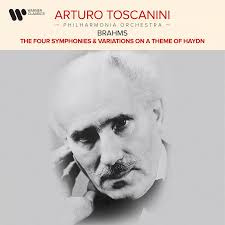
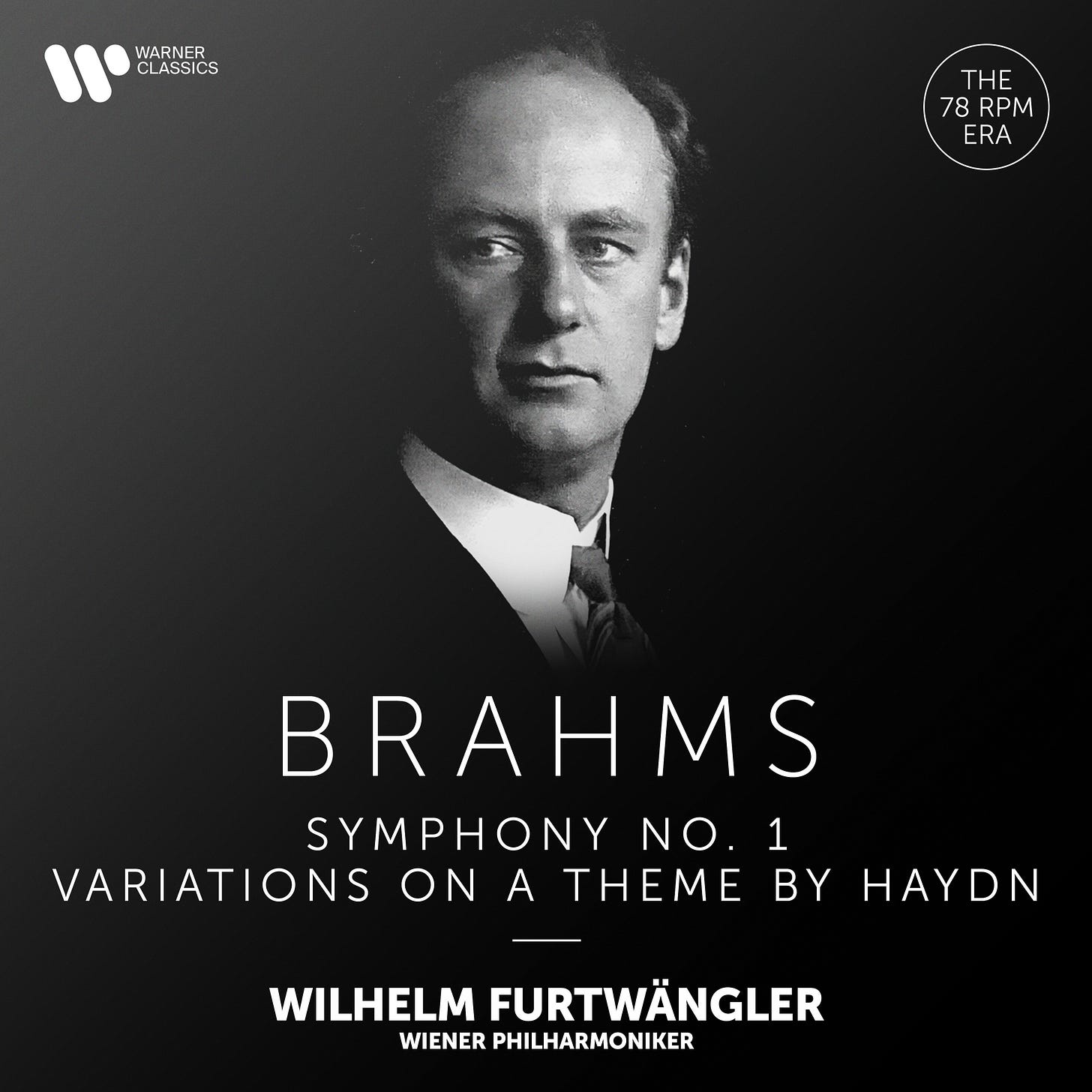
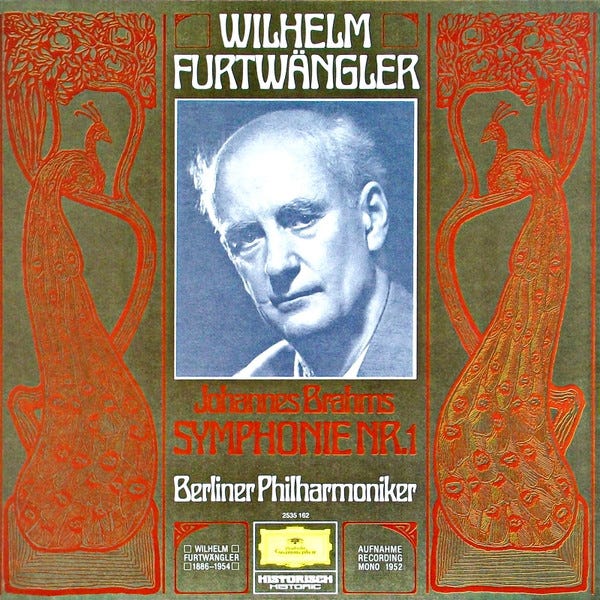
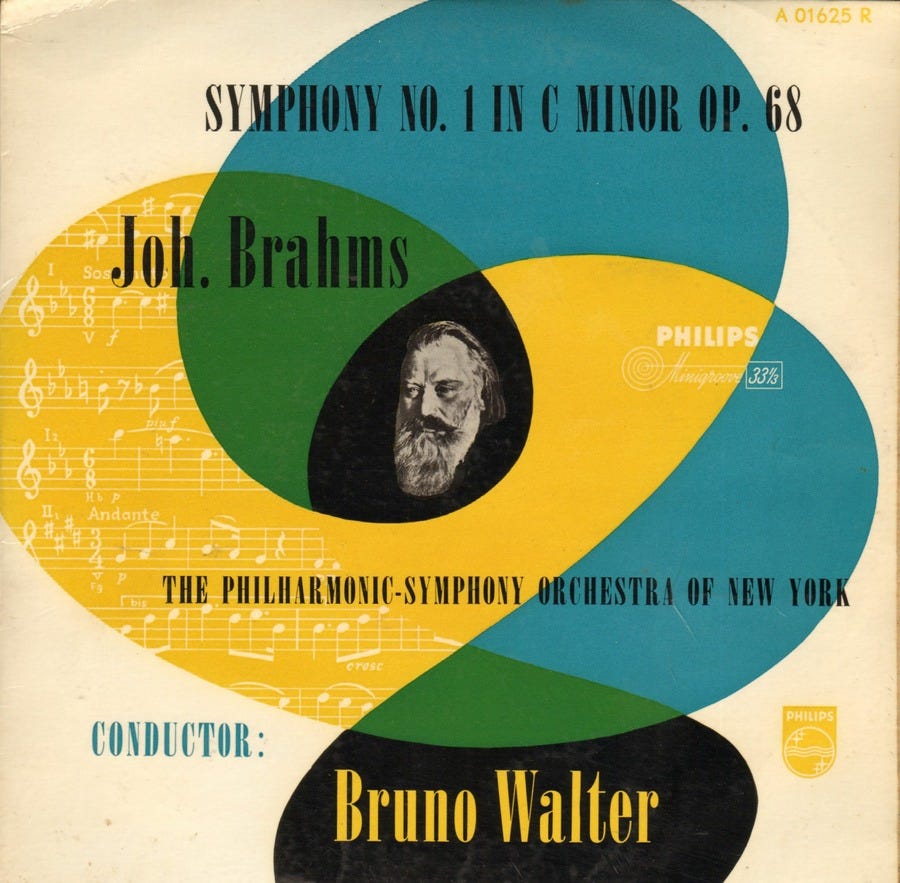

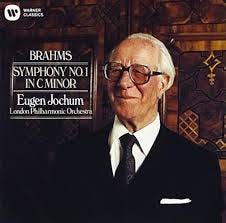

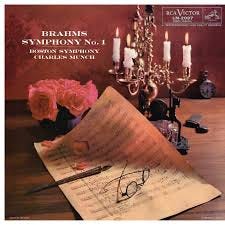

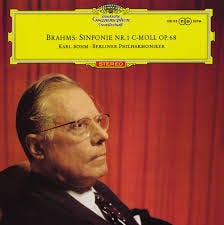
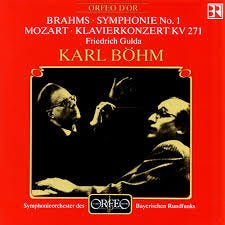

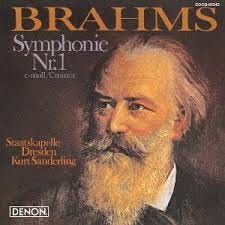
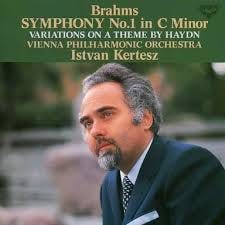
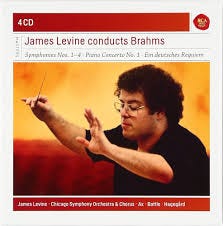

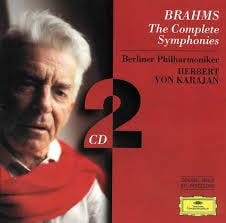
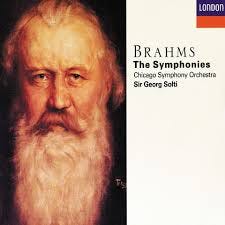
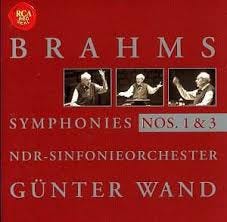
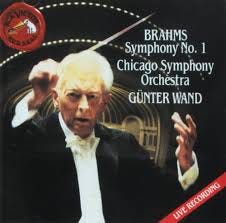
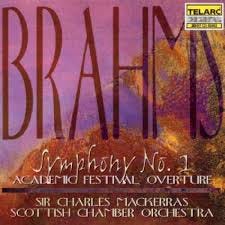
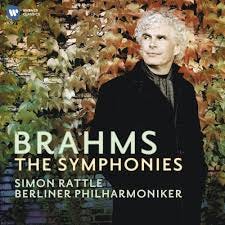

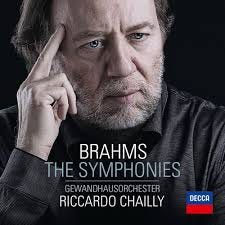
this, Mackerras right up there, down with Ozawa…
Hello. I never was a big fan of Brahms first, It was too "heavy" for my taste (my father had the Karajan set).One day in the record store I saw a cd with Giulini and the LA Philharmonic and I decided to give it a try. It was a whole new symphony for me, and since then it is my favorite version of Brahms first.
P.s The cd was DG 3Dclassics and was coupled with Schumann Manfred Overture, also very good